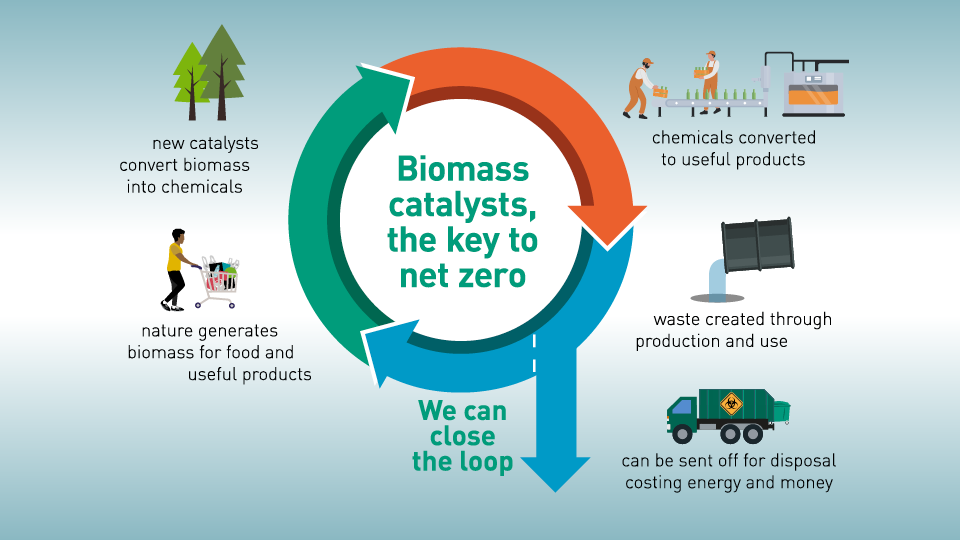What about renewables?
Clean renewable energy comes from natural sources like the sun, wind and water.
Battery and hydrogen fuel cells in cars, solar panels, geothermal energy plants and wind farms are all part of a booming global drive to replace fossil fuels.
But specialist fuels for aviation, long-distance transport and chemicals for consumer products are more difficult to replace.
They can be created from plants and crops, but we also need land to grow food and build homes.
This means that we need to be inventive and think of ways to use biomass - also known as biowaste - efficiently and effectively.

What is biomass?
Biomass is natural organic material generally collected from plants, including
- wood and wood pellets
- chaff from crops, like wheat and oats
- food waste, for example potatoes peelings and apple cores
The by-products of other human activity – including agriculture, construction, forestry management and wastewater treatment as well as water waste from brewing – these materials are generally considered waste.
However - being cheap, plentiful and renewable - they offer a long-term, sustainable way to meet our ever-growing demand for energy and platform chemicals.